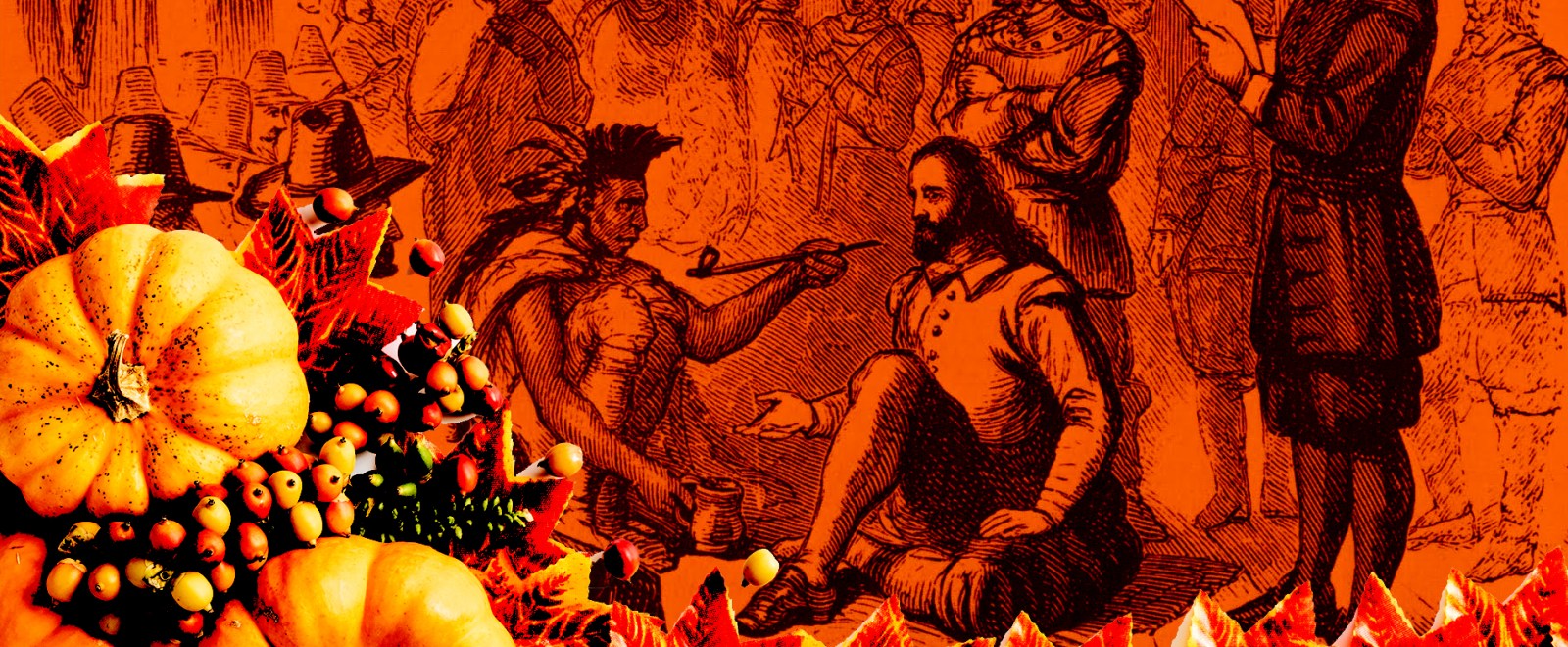What is a “traditional” Thanksgiving to you? Football games? Roasted turkey with all the trimmings? The beginning of the Christmas shopping season? Going to the movies to avoid family drama? Pageants where little kids dress up as “Pilgrims” and “Indians” and graciously shake one another’s hands?
All of that seems like what we know of Thanksgiving today, right? But it’s all also either the product of relatively recent inventions — like TV screens and cineplexes — or, in the latter case, a flat-out lie.
Most folks these days have at least some sense that our history isn’t what was taught in the 80s. America loves a good origin story and has since its founding days. In fact, the vast majority of our learned history is just that. In part, because Europeans have historically offset their atrocities with self-mythologizing and in part because the hard facts are often very, very dark. Both cases are true when it comes to American Thanksgiving. It’s a day full of traditions dreamed up by the Don Drapers of the world with any mention of the past relegated to easy-to-manage platitudes.
The real story of what makes up Thanksgiving may not be as Disney-ready as the one we used to see in school, but it’s certainly compelling. It’s a tale of colonization, genocide, the fight between church and state, the human desire to glorify the past, advertising to the masses for corporate profits, and the rise of lobbying in our politics. These forces weave together to make up today’s Thanksgiving “traditions” — resulting in the most uniquely American holiday.
Part I: So, Where Does This Holiday Come From?
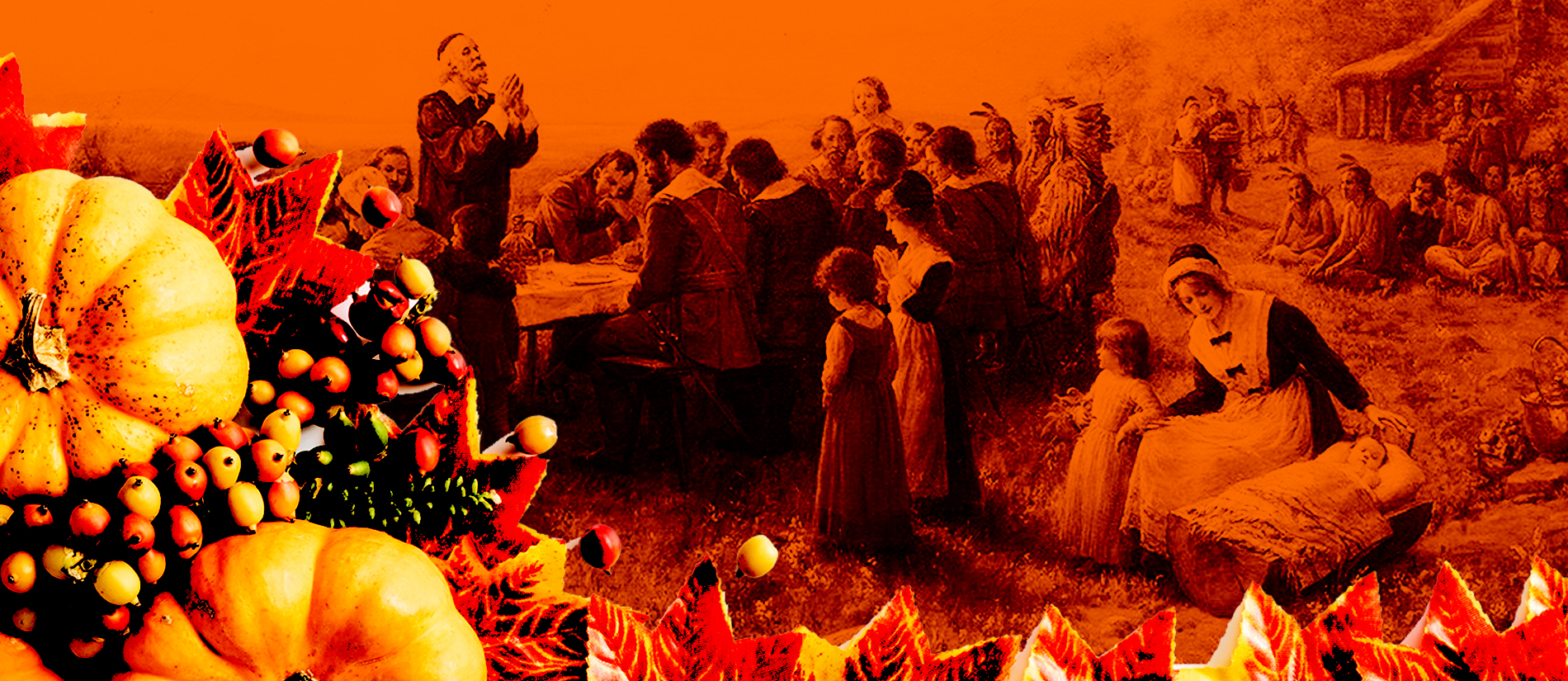
Thanksgiving today is thought of as a harvest festival. And while an event in 1621 that we memorialize as the “First Thanksgiving” was certainly that, there’s way more to the story than that single three-day affair.
European “harvest” and “thanksgivings” were very popular events across European and still are — Oktoberfest anyone? In fact, the English Pilgrims picked up on the autumn harvest festival tradition while in exile in Holland where an event called “Oktober Feest” was celebrated after the Siege of Leiden. Even then, harvest feasts were already being celebrated between fall and spring throughout the Americas in the 1500s by the Spanish and French.
Even the English colonialists had already celebrated harvest festivals or “rejoicings” in the Virginia colonies in the early 1600s. The difference in Virginia was that these rejoicings often took place after a military victory or massacre. That is, it was a party to celebrate the massacre of the Indigenous populations standing in their way of expansion or resources.
By 1600s, Spanish, French, Dutch, and English massacres were commonplace. For well over 100 years, Europeans had been marauding well into North and South America, tracing the Mississippi Valley, up the Eastern seaboard, and even along the entire length of the Amazon River — bringing war and disease to all places they set foot. So by the time the Pilgrims arrived in Massachusetts, massacres and enslavement of Indigenous people were all par for the course.
This is important as it informed how the English were able to get a foothold in the Americas in the 1600s. Those previous “explorations” spread disease that would decimate up to 90 percent of the Indigenous populations across the Americas. That combined with horrific acts of genocide and enslavement threw both continents into massive disarray. By the time the English rolled into Massachusetts, most of the survivors lived a sort of Mad Max-esque existence.
This was the reality of Wampanoag in 1620. They too had lost 90 percent of their people and were desperately trying to rebuild a fractured society — and that’s why the Wampanoag were open to taking in the immigrants to their land and even protecting them.
David Silverman lays down the reality of the Wampanoag and Pilgrim alliance in his seminal book This Land Is Their Land: The Wampanoag Indians, Plymouth Colony, and the Troubled History of Thanksgiving. In the book, Silverman details why the Wampanoag Massasoit (a sort of diplomatic leader) named Ousamequin helped the Pilgrims even though they had spent their first year robbing graves and squatting in emptied Wampanoag houses. In short, Ousamequin vowed to protect and help the 50-odd pilgrims because his people simply needed the numbers. The Narragansetts, a rival for land and resources, had not fallen victim to the spread of European diseases and they were willing to fight for land to plant their crops to feed their people.
This all leads up to the first “rejoicing” that took place in the fall of 1621. Back then, a “rejoicing” was a party. For three days (like the fest back in Holland), people would feast, run shooting drills, compete in feats of strength, and so on — kind of like a proto county fair. The Wampanoag — who had promised military protection to the Pilgrims — heard all the shooting, assumed they were under attack, and sent over 90 of their soldiers with Ousamequin at the lead. After a tense moment and realizing the pilgrims were actually partying, the Wampanoag ended up staying the three days and partying too.
By all accounts, there were no Pilgrims holding out their hands and inviting the Wampanoag to their table in “thanks.” It was mostly a misunderstanding that led to a little comingling. Almost inexplicably, though, this one-off event that few ever thought about again until the 1890s ended up being central to our ideas of Thanksgiving today.
Part II: What Happened Next?
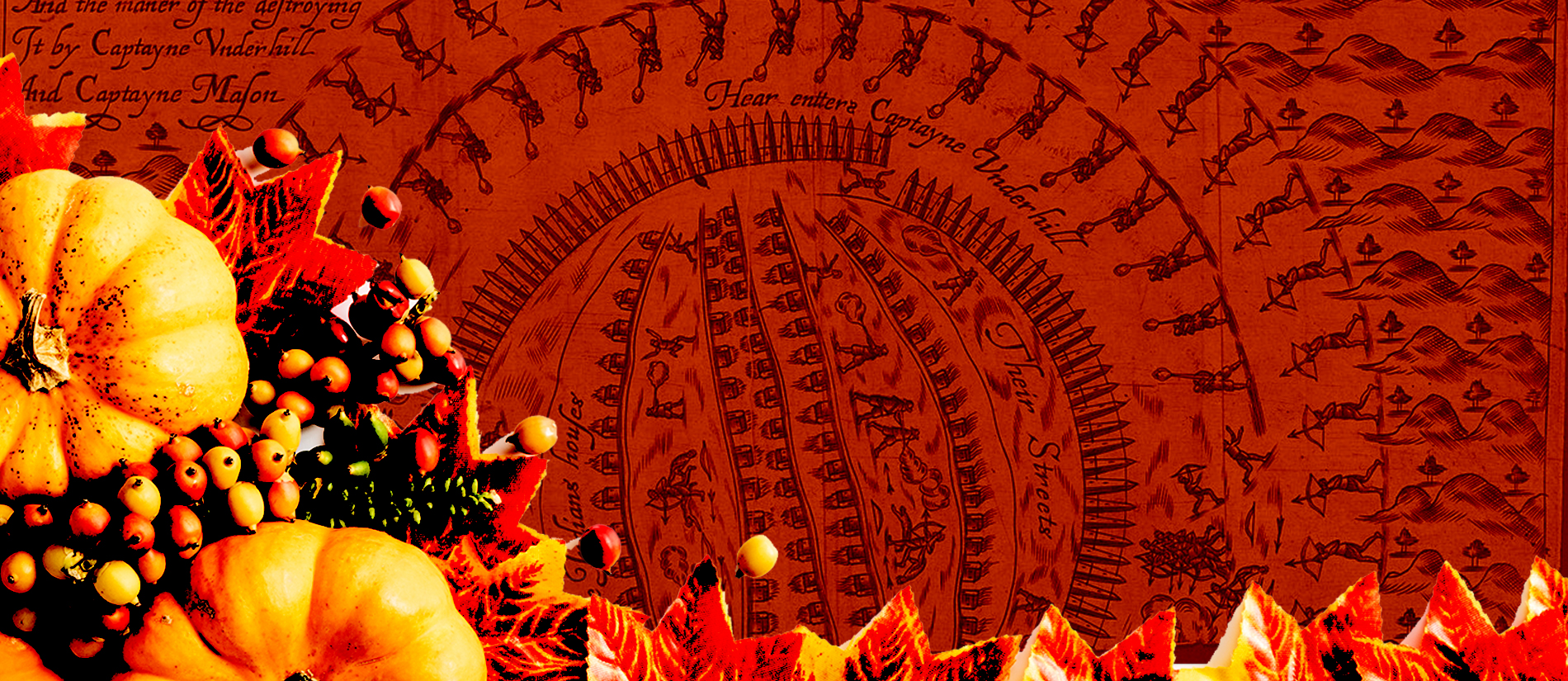
It’s important to remember the Pilgrims were not the Puritans. After 1621, the Puritans started flooding into Massachusetts and had very different ideas about what it meant to be a “good” Christian. The Puritans were disgusted by the Pilgrims working with the Indigenous population in their own ham-fisted way. The population of English and Dutch exploded by tens-of-thousands by the late 1630s and expansion, fundamentalist Christain repression, and flat-out genocide followed.
In 1637 there was Puritan “thanksgiving,” but this time it was a day of prayer and reflection — Puritans were too chaste to “rejoice.” The prayers were said to celebrate the Pequot Massacre. On the night of May 26, 1637, the English colonists with small groups of Mohegan and Narragansett soldiers (with whom they allied) surrounded the Pequot’s main town on the Mystic River, blocked the two main exits, and set the whole place on fire. They then shot anyone who tried to escape through the town’s exits or over the walls. Around 700 were slaughtered in a fiery death … most of them unarmed children, women, and the elderly. This is according to the English colonists’ own recording of the event.
The second Puritan “thanksgiving,” or day of prayer and reflection, was called in 1676. This time it was to celebrate the defeat of Ousamequin’s son Pumetacom — yes, the son of the man who chose diplomacy to deal with the arrival of the Pilgrims a short 50 years earlier. The English colonists celebrated the defeat of Pumetacom by decapitating him and placing his head on a pike in their town square where it would remain for two decades. This defeat marked the end of the era of the Wampanoag. The men were executed en masse or sold along with their children into slavery in the Caribbean and their culture was spread to the wind. The few female survivors held onto their culture by marrying European or African men, adhering to Christianity to blend in, and living far away from the colonial towns until the late-20th century when their tribes were finally recognized.
Why bring up these two horrific events? These are the two events that informed creating the first Thanksgiving in the United States — not the 1621 party.
Fast-forward to the 1770s. The United States is in its infancy. This is around the same time that General George Washington was ordering a scorched earth genocide against the Iriquois-speaking people of what is now upper New York. It also happens to be the time he declared the first official Thanksgiving Day.
In December of 1777, General Washington proclaimed the first Thanksgiving Day as a day of prayer to celebrate the defeat of the British at Saratoga, citing the use of the term and idea from the Puritans and the way they celebrated the defeat of their enemies. According to Washington, the holiday was a chance for prayer and to thank the “Almighty God” for their bounty. Washington would declare more Thanksgivings each year — usually sometime between September and February — all of which were meant as days of prayer to celebrate God after a military victory during the war. This is a direct link to the Puritan’s calling “thanksgivings” after their own, ahem, victories.
By 1782, Congress started declaring “national days of prayer, humiliation, and thanksgiving” to counter “times of distress” experienced by the fledgling country. By the time the ratifications of the First Amendment rolled around in 1789, the government calling for religious practices was kind of outlawed. So, to keep their Puritan Christain base happy, members of Congress called upon the president to use his powers to call for days of “thanksgiving” and national days of prayer.
In short, the federal government was enshrining laws, on one hand, to keep the church and state separate while, on the other hand, ensuring the executive branch could still keep Christain prayer a national observance via “thanksgivings.” From then on, the calling for national days of prayer and thanksgivings fell to the president to call for whenever he wished.
John Adams only called for two thanksgivings during his time in office. Jefferson, a deist, did not call for a single thanksgiving during his two terms, preferring religion and government remain separate. After the War of 1812, various presidents would call for thanksgivings throughout the decades mostly to bring about national days of prayer during wartime — which was becoming basically a constant state of life for the United States as the Indian Wars raged and U.S. expansionism took hold.
Finally, Abraham Lincoln enshrined Thanksgiving as a national holiday in 1863 at the height of the Civil War — and the Lakota War, Navajo Long Walk, and several other genocidal war machines were in play from the Great Plains to the Pacific Ocean. Again, Lincoln’s proclamation was an edict towards a day of prayer during wartime, full stop. The new wrinkle here was that Lincoln enshrined the holiday as permanent. Lincoln pinned the day to the final Thursday of November every year.
As the 19th century drew to a close, traditions began to arise around the guaranteed day off that whittled away at the “day of prayer” roots. High schools and colleges started playing their last game of the season on Thanksgiving Day. Families would go out on bird hunts in the morning hours for geese, duck, grouse, and, yes, turkey. Churches would run raffles to provide families with meals. Thanksgiving was, for the first time, a day off.
At the same time, the Indian Wars wound down — not long after the U.S. Army massacred hundreds at Wounded Knee. And, shortly thereafter, the idea of the Pilgrims and Indians coming together started sneaking into the mythos around Thanksgiving Day for the first time.
Part III: How Modern Thanksgiving Was Born
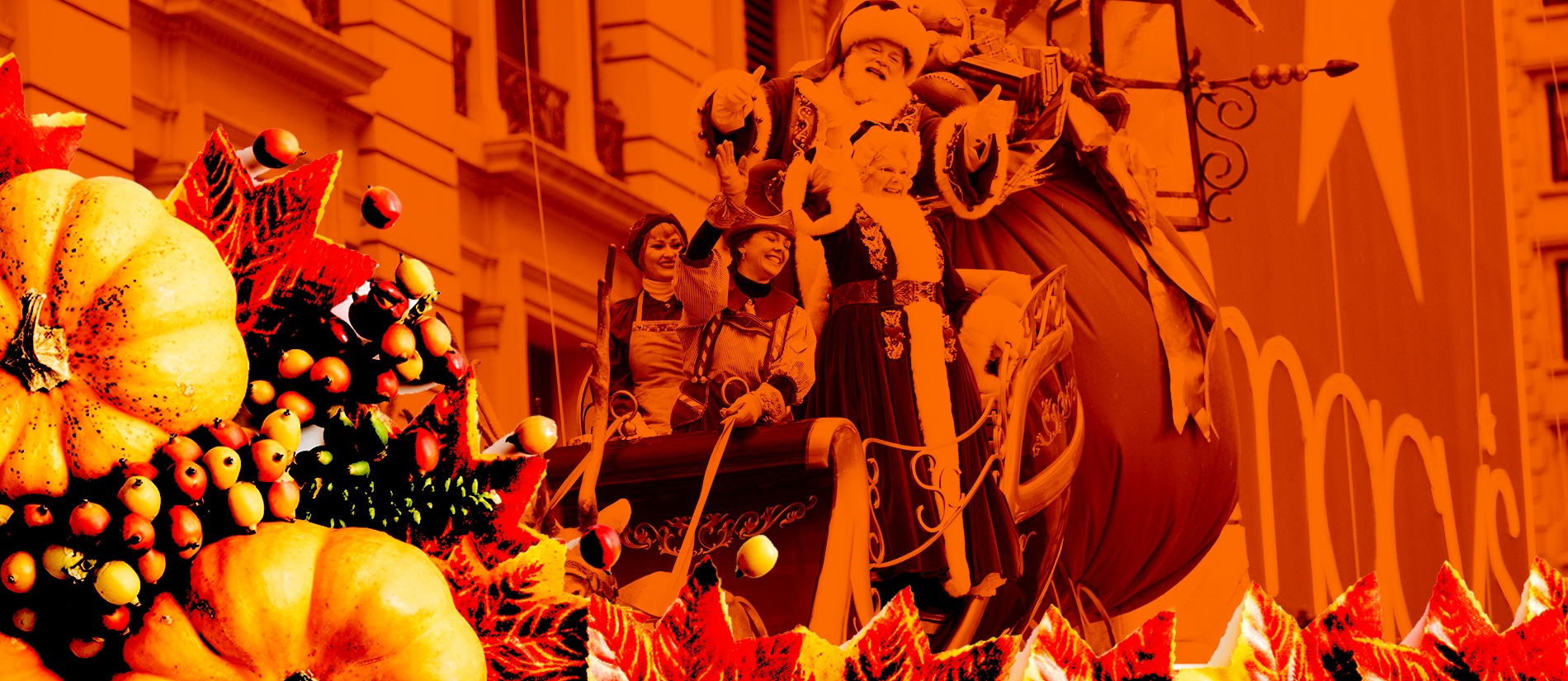
Between 1770 and the Civil War, Thanksgiving was little more than a day that presidents used to circumvent the First Amendment and declare a national day of Christain prayer. Post-Civil War, it became a national holiday/day off that slowly turned into a feast, sports day, and family gathering as different regions interpreted what the holiday meant.
In the 1890s, the idea of a Pilgrim-Wampanoag alliance in 1621 as the origins of American Thanksgiving came into focus. Lisa Blee and Jean O’Brien cite their book, Monumental Mobility: The Memory Work of Massasoit, that grabbing onto that single event in 1621 was less about some idealized view of European and Indian relations and more about keeping America the right kind of “European.”
Blee and O’Brien note that the 1890s to 1920s saw a massive backlash against Irish, Italian, Eastern European, Asian, Hispanic, and Jewish migration into the United States. At the same time, the myth of New England, the Pilgrim, and the first Thanksgiving were born as an idealized version of what America is supposed to be — Anglo-Saxon, English-speaking, chaste, and pastoral. It was myth-making based on the fear of the other.
The story of the Pilgrims being hard-working, fiercely independent, and so nice they even invited “savages” to share in their bounty became the story of the “first” Thanksgiving. Ironically, late 19th-century Anglo-Saxon Americans (who now considered themselves “natives“) were idolizing one set of immigrants to demonize the latest wave of immigrants. It’s a mode of thinking that echoes loudly to this day.
And even as the myth-making was kicking into high gear and people around the country were doing their own thing, prayer was still at the center of the holiday. It wasn’t until the post World War One era that the holiday really took on the “traditions” we think as sacrosanct these days. It’d be a colliding of PR manipulation and corporate lobbying of the highest office in the land that made the Thanksgiving we know today.
Fred Lazarus, Jr. (department store magnate) was instrumental in starting Thanksgiving Day parades in the 1920s along with other department store owners across the country. Then, after the Gerat Depression hit, Lazarus, Jr. lobbied President Franklin Roosevelt to extend the Christmas shopping season to help stores survive the trying times. Lazarus, Jr. lobbied FDR to peg Thanksgiving to the fourth Thursday in November to assure a longer shopping season for Christmas some years. Congress eventually agreed and past legislation through both the house and senate that the president then signed into law.
Let that sink in, the federal government mandated when we would start the Christmas shopping season thanks to a department store owner wanting more time to sell stuff. In the iconic words of Tim Curry in Clue, “what’s more American than that?!?”
Of course, not everyone was one board with this. 22 of the states in the Union refused to move the holiday from the last Thursday of November to the fourth Thursday and even dubbed the new date the “Democratic Thanksgiving” due to their love for Lincoln. The states that refused to move the date of the holiday called their version the “Republican Thanksgiving.”
At the same time Fred Lazarus, Jr. was lobbying the federal government for longer shopping seasons, Eddie Bernays (the father of modern American PR) and newly minted PR firms were lobbying the American people via advertising to buy more turkeys, potatoes, and even black olives to support those industries during a traditional low-seasons for sales. For the first time in American consumerism, PR companies used psychology to represent brands to boost sales. One of the biggest campaigns was to help the turkey industry during a classic lull between August and Christmas in their sales. Thanksgiving was the perfect target. And it worked. Americans eat about 45 million turkeys on Thanksgiving these days.
It’s also worth noting that the NFL had its inaugural year in 1920 (well, technically the American Professional Football Conference). And you better believe they played a game on Thanksgiving Day in 1920 as that tradition had started decades earlier on high school and college campuses across the country.
All told, the era between the 1920s and ’40s saw Thanksgiving become what we know today. Football, Turkey Day, the family drama around politics, and the start of the Christmas shopping season all came into focus as a “day of prayer” slipped further and further into the background — as did the average American’s understanding of the “Indians” they were dressing up their kids as in school pageants.
Part IV: What Does All Of This Mean Now?
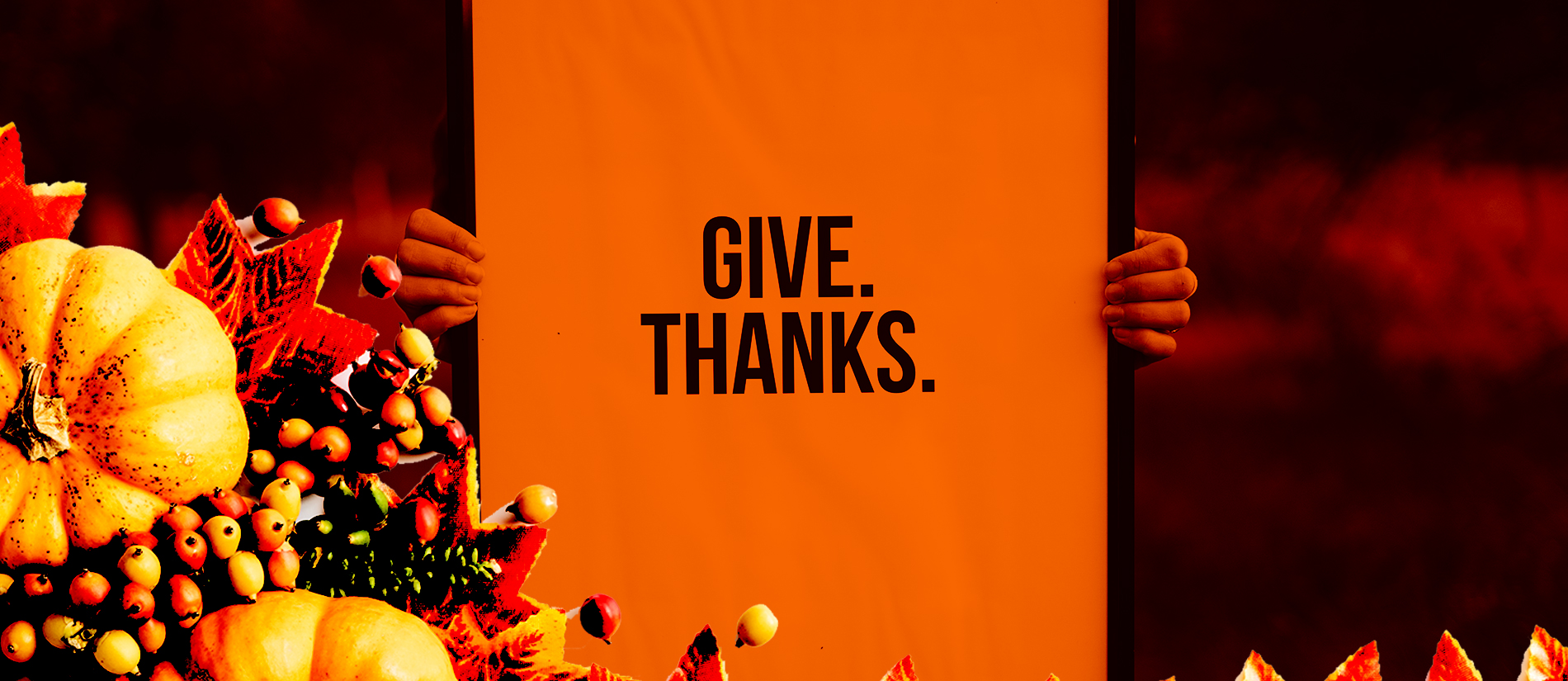
So, what does all of this make Thanksgiving mean today? As someone with an Indigenous background, I honestly don’t know. Most Americans celebrate Thanksgiving without thinking about any of this. Some of us cannot get past it. How can we be proud Americans — of any background — with so far to go with reconciliation when there isn’t even recognition?
Americans have traditionally not been taught our history in school. In the 1980s, the closest we got to the genocide Americans spread throughout the 1800s was a computer game called Oregon Trail — a whitewashing of a literal, institutionalized genocide carried out in tandem by the U.S. government and private citizens throughout the 1800s. These days, things are improving and revisionist (read: real) history is becoming part of the curriculum.
After the Indian Wars ended, the United States changed its policy from extermination to assimilation — not out of some sense of humanity, literally only to save money. So the era of “kill the Indian to save the man” was born between 1870 and 1970. Federally-funded assimilation schools, run by Christain churches, were filled with children by the U.S. government through outright child abduction. This action sought to destroy a continent’s worth of people to their very soul.
It was only after the German atrocities of WWII were revealed that the U.S. pulled back on their assimilation program (it didn’t end completely until 1978). On the surface, the U.S. government replaced assimilation with “Urbanization” in the 1950s. That was a program wherein they forced Indigenous folks off reservations and into urban centers to 1) make it easier to take reservation land and resources and 2) further “kill the Indian to the save the man.” This lasted well into the 1980s.
Today, being and Indian in America is still nearly a death sentence. Rape and murder of Indigenous women are the highest of any demographic by far. Indigenous children are stratospherically more likely to be forced into the school-to-prison pipeline. Indian reservations are the homes to America’s poorest counties. Some have a life expectancy less than people living in actual war zones. And, most importantly, treaty promises are still being neglected, leading to a lack of basic amenities that were promised to all communities via treaties.
Yes, this genocide continues and, sadly, every person in this country is benefitting from this process right now. Let’s break this down as simply as possible. Every natural resource this country takes from the land and sea, every single inch of land Americans live on today is available because of multiple treaties the United States signed with individual Indigenous nations.
Those treaties granted the rights to land and resources to migrant American settlers. In return, the United States government promised unrestricted use of federal land, full medical care, education, clothing, food, and security “forever.” And, just to be clear, the U.S. put the “forever” in that contract. Of course, the U.S. government never planned on fulfilling these treaty promises (as their policy was both extermination and assimilation to annihilate the people they swore to protect).
It’s fair for you to ask why you never hear about any of this or why all of this information seems so distant. Part of that is simply down to our education system choosing historical myths to make you feel better. That leads to things like President Trump declaring that Native American Heritage Month is now “National American History and Founders Month.” Yes, that really happened this year. But it goes deeper than that.
Let’s take a look at Native American Heritage Day. This day was enshrined as a civil holiday that specifically informs schools to take a whole day to celebrate and teach students about Native Americans. George W. Bush signed the day into law after unanimous support from both houses of Congress in 2008. The day they chose for Native American Heritage Day was designated the Friday after Thanksgiving every year. Black Friday. When every single school in the nation is closed and everyone just wants to shop.
All of this is to say that it doesn’t mean there aren’t salvageable moments of tradition on Thanksgiving Day. The Pilgrims and Wammapnong did work together, albeit for a very short amount of time. But that relationship turned to dark that it’s hard to glean any worthy tradition to hold onto from that time.
Maybe Thanksgiving can just be about kicking off the Christmas season? Maybe it can be a “take one” on roasting a turkey before Christmas? Maybe there’s something salvageable in the fact that we can take this time to reflect with family about what we actually have to be thankful for in this world? Self-reflection, after all, are the cobbles that pave the path to healing. And, certainly, the tradition of charity and feeding the needy is something to keep front-and-center.
And if we really want to make it about European colonists and Indigenous people, maybe we can make it about who we really are, what our history really is, and how we can move on to the next chapter. Together.

